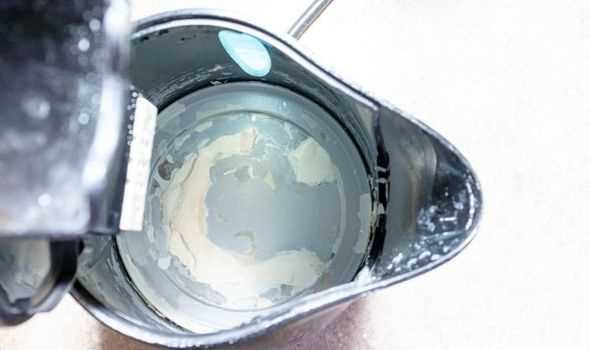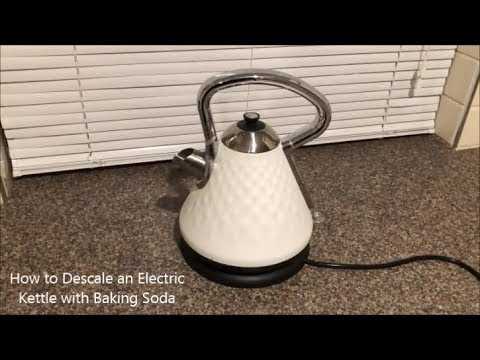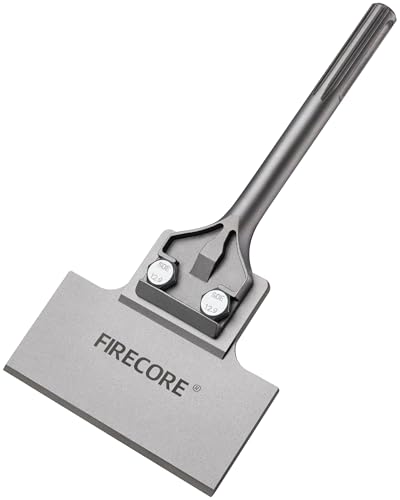


If you’re an avid tea or coffee drinker, chances are your kettle has built up some limescale over time. Not only does limescale affect the taste of your hot beverages, but it can also reduce the efficiency and lifespan of your kettle. Luckily, descaling your kettle is a simple and effective process that can be done using a household ingredient – bicarbonate of soda. In this guide, we will take you through the steps of descaling your kettle using bicarbonate of soda, giving you a clean and fresh tasting cup of tea or coffee every time.
Bicarbonate of soda, also known as baking soda, is a versatile and natural cleaning agent that can be used in a variety of ways around the home. Its powerful yet gentle abrasive properties make it perfect for removing limescale from a kettle. By using bicarbonate of soda, you can avoid using harsh chemicals and instead opt for a safe and eco-friendly method of descaling.
The first step is to fill your kettle with a solution of bicarbonate of soda and water. Measure out one tablespoon of bicarbonate of soda for every cup of water your kettle holds. For example, if your kettle holds 1.7 liters of water, you will need 8 tablespoons of bicarbonate of soda. Mix the bicarbonate of soda and water together until the powder has dissolved completely.
Next, pour the bicarbonate of soda solution into your kettle and switch it on. Allow the solution to come to a boil and then switch off the kettle. Leave it to sit for at least 30 minutes to allow the bicarbonate of soda to work its magic on the limescale. After 30 minutes, pour out the solution and rinse the kettle thoroughly with clean water. Your kettle should now be free from limescale and ready to be used again.
Please note: It is important to refer to the manufacturer’s instructions for your specific kettle before descaling. Some kettles may have specific descaling instructions or recommend alternative methods. It is also recommended to descale your kettle on a regular basis to prevent the build-up of limescale and maintain its efficiency.
So there you have it, a simple and effective guide to descaling your kettle using bicarbonate of soda. By following these steps, you can enjoy a clean and fresh tasting cup of tea or coffee every time, while also prolonging the life of your kettle. Say goodbye to limescale and hello to a perfectly functioning kettle!
Why Descaling is Important for Your Kettle
Descaling is an important maintenance task for your kettle. Over time, mineral deposits called scale can build up inside your kettle. This scale is primarily made up of calcium and magnesium, which are naturally present in water.
When scale builds up in your kettle, it can have several negative effects:
- Affects the taste of your drinks: Scale can give your drinks a metallic or off-flavor, making them less enjoyable to drink.
- Reduces the efficiency of your kettle: Scale acts as an insulator, preventing the heating element from effectively heating up the water. This can lead to longer boiling times and inefficient energy usage.
- Shortens the lifespan of your kettle: The accumulation of scale can cause damage to the heating element and other internal components of your kettle, reducing its lifespan.
- Potential health risks: Scale can also harbor bacteria and other microorganisms, which can pose a health risk if ingested.
To prevent these issues, it is important to regularly descale your kettle. Descaling helps remove the built-up scale and keeps your kettle in good working condition.
There are different methods for descaling a kettle, but using bicarbonate of soda (baking soda) is one of the easiest and most effective options. This natural cleaning agent helps break down and dissolve the scale, leaving your kettle clean and free from mineral deposits.
Benefits of Regular Descaling for Your Kettle
Regular descaling of your kettle offers a range of benefits, not only for the taste and quality of your hot beverages but also for the lifespan and efficiency of your kettle. Here are some key benefits:
1. Improved Taste and Quality of Hot Beverages
Over time, mineral deposits and limescale can build up in your kettle, affecting the taste and quality of your hot beverages. Descaling your kettle regularly helps to remove these deposits, resulting in better-tasting and fresher hot drinks.
2. Prolongs the Life of Your Kettle
Mineral scale deposits can damage your kettle’s heating element and other internal components, leading to reduced efficiency and a shorter lifespan. Regular descaling helps to prevent these deposits from accumulating, ensuring that your kettle performs optimally for longer.
3. Maintains Efficient Performance
When limescale and mineral deposits accumulate in your kettle, they can interfere with its heating element, causing it to work harder and longer to heat up the water. This can result in increased energy consumption and decreased efficiency. Descaling your kettle regularly helps to maintain its efficient performance, saving energy and reducing your electricity bills.
4. Reduces Boiling Time
With regular descaling, you can reduce the time it takes for your kettle to reach boiling point. Limescale and mineral deposits act as insulators, slowing down the heating process. By removing these deposits, your kettle can heat up water faster, saving you time and convenience.
5. Prevents Unpleasant Odors and Residues

As limescale accumulates, it can create unpleasant odors and residues in your kettle. Regular descaling helps to eliminate these odors and residues, ensuring that your hot beverages remain clean, fresh, and free from any unwanted flavors or smells.
6. Easy Maintenance
Descaling your kettle regularly is a simple and straightforward maintenance task that doesn’t require any special skills or expensive products. Using bicarbonate of soda as a descaling agent is not only effective but also cost-efficient, making it an easy and affordable way to keep your kettle in top condition.
By regularly descaling your kettle, you can enjoy better-tasting hot beverages, prolong the life of your kettle, maintain its efficient performance, reduce boiling time, prevent unpleasant odors, and easily maintain it without any hassle or high costs. Make descaling a part of your kettle maintenance routine and reap the benefits for years to come.
Easy and Effective Steps to Descale Your Kettle
Step 1: Gather Supplies
Before you begin descaling your kettle, gather the necessary supplies:
- Bicarbonate of soda (also known as baking soda)
- Water
- A soft cloth or sponge
Step 2: Prepare the Bicarbonate of Soda Solution
Fill your kettle with water, leaving some space at the top to prevent overflow. Add approximately two tablespoons of bicarbonate of soda per liter of water.
Step 3: Boil the Solution
Place the kettle on the stove and turn the heat on. Allow the solution to come to a boil and let it simmer for about 15 minutes. The bicarbonate of soda will help break down the mineral deposits and remove any limescale buildup.
Step 4: Let it Soak
After boiling the solution, turn off the heat and let the kettle sit for at least 30 minutes. This will allow the bicarbonate of soda solution to further loosen any stubborn limescale or mineral deposits.
Step 5: Scrub and Rinse
Using a soft cloth or sponge, scrub the inside of the kettle to remove any remaining limescale. Rinse the kettle thoroughly with clean water to remove any residue.
Step 6: Repeat if Necessary
If there is still some limescale present, you can repeat the descaling process until the kettle is completely clean.
Step 7: Regular Maintenance
To prevent limescale buildup in the future, it is recommended to descale your kettle every few months or as needed. Regularly rinsing your kettle after use and keeping it dry when not in use can also help prevent limescale.
By following these easy and effective steps, you can easily remove limescale and keep your kettle clean and functional for years to come.
Using Bicarbonate of Soda for Descaling
When it comes to descaling your kettle, you can use bicarbonate of soda, also known as baking soda, as an effective and easy solution. Bicarbonate of soda is a natural and environmentally friendly ingredient that can help remove limescale build-up in your kettle, leaving it clean and ready to use.
Why Use Bicarbonate of Soda?
Bicarbonate of soda is a mild alkali that can help dissolve limescale deposits in your kettle. It is also an effective cleaning agent for removing stubborn stains and odours. Using bicarbonate of soda is a simple and cost-effective way to descale your kettle without using harsh chemicals.
Step-by-Step Guide
Follow these steps to descale your kettle using bicarbonate of soda:
- Fill your kettle halfway with water.
- Add 2 tablespoons of bicarbonate of soda to the water.
- Boil the water and let it sit for 10-15 minutes.
- Empty the kettle and rinse it thoroughly with clean water.
- Wipe the inside of the kettle with a clean cloth to remove any remaining limescale residue.
It is important to note that you should not use this method on electric kettles with exposed coils. Instead, follow the manufacturer’s instructions for descaling.
Tips and Precautions
- You can add a squeeze of lemon juice to the bicarbonate of soda solution for extra cleaning power and a fresh scent.
- For stubborn limescale deposits, you can repeat the process or make a paste using bicarbonate of soda and water to scrub the affected areas with a sponge or brush.
- Always ensure that your kettle is unplugged and cool before cleaning.
- Regular descaling can help prolong the lifespan of your kettle and improve its performance.
By using bicarbonate of soda to descale your kettle, you can easily remove limescale build-up and keep your kettle clean and efficient. Give it a try and enjoy a fresh cup of tea or coffee without any unpleasant tastes or odours!
Tips for Maintaining a Clean and Scale-free Kettle
Keeping your kettle clean and free from limescale buildup is essential to ensure its longevity and maintain the quality of your hot beverages. Here are some tips to help you keep your kettle clean:
1. Regularly descale your kettle:
Descaling your kettle should be done regularly, depending on the hardness of your water. Using a descaling agent like bicarbonate of soda can effectively remove limescale buildup. Refer to our previous article on how to descale a kettle for step-by-step instructions.
2. Use filtered or bottled water:
Using filtered or bottled water can help reduce the amount of mineral deposits that accumulate in your kettle. It is especially useful if you live in an area with hard water.
3. Avoid boiling excess water:
Boiling more water than you need can lead to an increased buildup of limescale. Try to boil just the amount of water you require to minimize limescale formation.
4. Empty and dry your kettle after use:
Emptying any leftover water from your kettle and allowing it to dry after each use can prevent limescale from accumulating. This simple step can significantly prolong the life of your kettle.
5. Clean the exterior of your kettle:
In addition to descaling the interior, remember to clean the exterior of your kettle regularly. Wipe it down with a damp cloth to remove any dirt or stains.
6. Avoid using harsh chemicals:
Avoid using harsh cleaning agents or abrasive materials to clean your kettle. These can damage the kettle’s surfaces. Stick to mild cleaning solutions and soft cloths.
7. Store your kettle properly:
When not in use, ensure that your kettle is stored in a clean and dry environment. Avoid keeping it near other appliances or areas with excessive moisture, as this can promote the growth of limescale.
8. Consider using a water filter:

If you consistently struggle with limescale buildup, you might want to invest in a water filter. Water filters can help remove impurities and minerals from your water, reducing the chances of limescale formation.
9. Keep an eye on the indicator lights:
If your kettle has indicator lights, pay attention to them. If they start to flicker or indicate a potential issue, it might be a sign that limescale is affecting the kettle’s performance. Take action promptly to descale your kettle to prevent further damage.
By following these simple tips, you can ensure that your kettle remains clean and scale-free, providing you with fresh and great-tasting hot drinks for years to come.
FAQ
Why is descaling a kettle important?
Descaling a kettle is important because over time, mineral deposits build up on the bottom of the kettle, which can affect the taste of the water and reduce the efficiency of the kettle.
How often should I descale my kettle?
The frequency of descaling your kettle depends on how often you use it and the hardness of your water. In general, it is recommended to descale your kettle every 1-3 months.
Can I use vinegar instead of bicarbonate of soda?
Yes, you can use vinegar to descale your kettle. Vinegar is an acid that helps break down the mineral deposits. However, some people prefer using bicarbonate of soda because it is less pungent in odor.
What is the process of descaling a kettle with bicarbonate of soda?
The process of descaling a kettle with bicarbonate of soda involves filling the kettle with water, adding bicarbonate of soda, bringing the solution to a boil, allowing it to sit for some time, and then rinsing the kettle thoroughly.
How long should I let the bicarbonate of soda solution sit in the kettle?
You should let the bicarbonate of soda solution sit in the kettle for at least 30 minutes. This allows the bicarbonate of soda to break down the mineral deposits and make them easier to remove.
Is it safe to drink the water after descaling the kettle with bicarbonate of soda?
Yes, it is safe to drink the water after descaling the kettle with bicarbonate of soda. Bicarbonate of soda is a common kitchen ingredient and is safe for consumption.
Can descaling a kettle remove limescale completely?
Descaling a kettle can help remove limescale, but it may not remove it completely, especially if the build-up is severe. Regular descaling can help prevent limescale build-up and keep your kettle in good condition.












